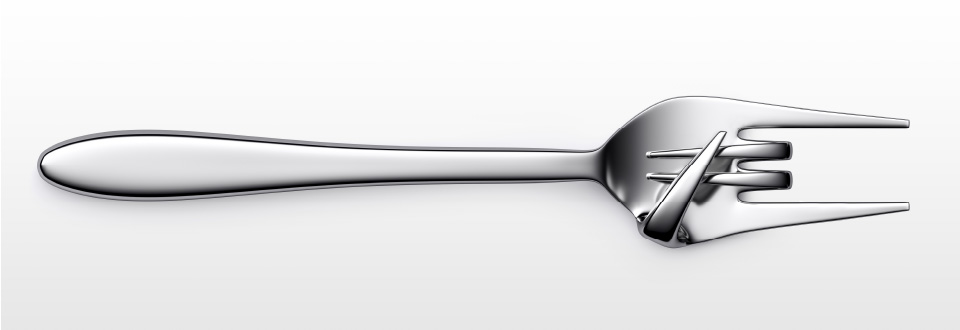Pressure on the capacity of metalworkers is increasing. Customers demand that they perform more and more different operations and thus handle more production stages. Luckily, digital transformation offers a solution. Feature recognition and automated manufacturability analysis provide additional leeway. In this blog you will read how and why Upstream Feature Management is a necessity and is becoming the new standard within the metalworking industry.
Perform each production stage in-house or outsource?
The increasing demand for various machining operations presents metalworkers with two choices: perform the increasingly diverse production stages in-house or partner with suppliers. Take the placement of inserts, painting or powder coating. Should you do it yourself or would you rather outsource? That’s entirely up to the metalworker, but the metalworker wants to be able to offer it to the customer because to sell them no is fatal.
A growing diversity of production stages also means: a more complex route to the final product. Especially if you as a metal worker also outsource parts, meaning you also have to think about transportation and related operations. The coordination on the production floor, the estimation of production times, of delivery deadlines and consequently of quotations: it all becomes more complicated.
The demand for (sub)assemblies is increasing
That’s not all. A development that is also contributing to the pressure on metalworkers is that the demand for (sub)assemblies is increasing. They increasingly have to account for semi-finished products. As a result, metalworkers must perform operations at a higher level of abstraction, such as welding and assembly. This also makes the quotation process and the production routing more complex, because these now also involve (sub)assemblies and their subsequent assembly.
These developments will ensure that 2D drawings will disappear at a rapid pace. These are in fact no longer sufficient to carry out the increasing diversity of operations. Cutting a sheet of metal is fine in 2D, but producing (sub)assemblies is a different story; you really need to draw those in 3D. This obviously has implications for factories that largely turn over sales based on 2D drawings. These are going to find it increasingly difficult in the years to come.
Artificial intelligence has become a necessity
Because of the diversity of operations that metalworkers have on their shoulders, more and more artificial intelligence is needed at the beginning of the process. The trusty CAM systems specialize in only one specific operation, for example sheet bending, and always work from that one perspective. If you put the geometry of a tube or a rotating part into this, the system doesn’t know what to do with it.
Currently, for this reason, metalworkers have to choose the right CAM system for each drawing of an operation. This is a process that is still done by hand at many plants. But if you want to do this smartly and efficiently as a metal worker, you need intelligence at the beginning of the process (upstream) that knows how to recognize the diversity of parts, (sub)assemblies and operations.
New generation of software within the metalworking industry
For a long time there was no digital solution for this. But a new generation of software is now beginning to emerge that can accurately recognize a wide variety of shapes and operations. Metalworking software that can distinguish sheets from tubes, categorize different profiles and recognize basic shapes to provide insight into what materials (sheets, profiles, tubes, bar and stock material for machining) you need to purchase in what quantity. Even purchasing parts are now recognizable.

So instead of using a multitude of specialized CAM software, you deploy this new technology as early as possible in the process. All incoming customer inquiries can thus be categorized and features recognized fully automatically. It makes quotations a lot easier and that gives leeway to the metalworker! And it makes work preparation a lot easier, so there’ s also breathing space for the work planner.
Here are the 6 biggest advantages of this new generation software:
- Feature recognition
These types of intelligent software are called form recognition and feature recognition, which recognizes features in geometry and can therefore determine the production stages needed to realize them. What can be recognized today is very extensive and is much more accurate than what any estimator is able to recognize.
- Feature management
The beauty of feature recognition: If you can do that in 3D, you can also take the next step. And that is that you can de-feature.
It’s like this. The design you receive from the customer is always the end result. So drawings only describe what leaves a metalworking plant. But what it looks like on the production floor at any given moment in the production process, there is no drawing of that. With very powerful feature management you are able to strip a drawing of certain features. That is, you can automatically generate a drawing of the product so you know what the product will look like before a production stage and after a production stage. And that throughout the entire course of operations!
- Suitable for robots
Why is this so important? Metalworkers must automate extensively to survive. Using a robot instead of an operator seems simple. But if products are difficult to stack, they still require human labor. Because a robot is not able to do that. For each production stage, you need to know what the product looks like to determine if it is suitable for a robot to handle. The suction cups must fit adequately on the product.
So the shape must be suitable for a robot. Therefore, it is crucial that you have very powerful feature management so that you have a drawing of what the product looks like before and after each production stage. Pickability, stackability are just a few of the dozens of types of decisions that you need to be able to make automatically if you want to automate your facility to a great extent.
- Automated decisions in the workplace
Another example. Imagine you have a product, let’s take sheet metal, and you need to add inserts (press-in parts) into it. There may be settings (folds) in there, that’s very common. Now what if those inserts need to be in a place that you can’t reach because of the setting? Then, for that product, you have to redesign the routing of your production process. Laser cut first, press in and then edge. Now people are deciding that. But if we want to move – and we must – toward a manufacturing plant where the lights can go out and where robots work for the most part, then you need very powerful shape recognition and feature management at the beginning of the process. Those types of artificial intelligence will soon be the basis of all of your automated decisions in the workplace.
- Manufacturability analyses
Feature management also provides a boost to the manufacturability of a product. Now there are limitations to what a specialized CAM system can determine. By setting up features at the front end of the process, the initial question is no longer: is it manufacturable? But: how can we create this best? And thus: which features can we best make with which machines/suppliers? Almost everything is manufacturable, but in a different way than your standard routings would work in your facility. Even the choice of whether to outsource, and with which partners, can be automated using artificial intelligence.
A new foundation for the production process is emerging thanks to these developments. Recognizing shapes and features, being able to strip features, and being able to do manufacturability analysis: these are the basics of the infrastructure that a metalworking plant needs if it is ever to become an automated plant at all.
- Product and Manufacturing Information (PMI)
It should be obvious: artificial intelligence is going to make the work process of metalworkers smarter and more efficient. As a result, the work drawings with all the tolerances are also going to disappear. Those Word and PDF files are currently created by humans from CAD systems. This is far from ideal. Because it is difficult to interpret by computer exactly what is in those unstructured documents.
Fortunately, a solution to do this accurately has existed for decades: Product and Manufacturing Information (PMI), which allows the designer to add additional information to the CAD drawing. If you use this instead of work drawings, then as a metalworker you have all the information combined to automate the decisions you need to make. You know at a glance: certain tolerances are required here, so I have to use that machine.

Conclusion:
Arriving at the conclusion of this story. With digital transformation, of which we talk so much nowadays, being a metal worker you should start at the very beginning of the manufacturing plant. Upstream is what we call it. And all with very powerful form recognition, feature recognition, automated manufacturability analysis and PMI. To ensure that at any point in the production process you have all the information you need to make any decision automatically.
The result: less pressure, less dependence on people and an automated production process that is smart and therefore able to function autonomously. The good news is that the technology for this already exists today. We have named it Upstream Feature Management.